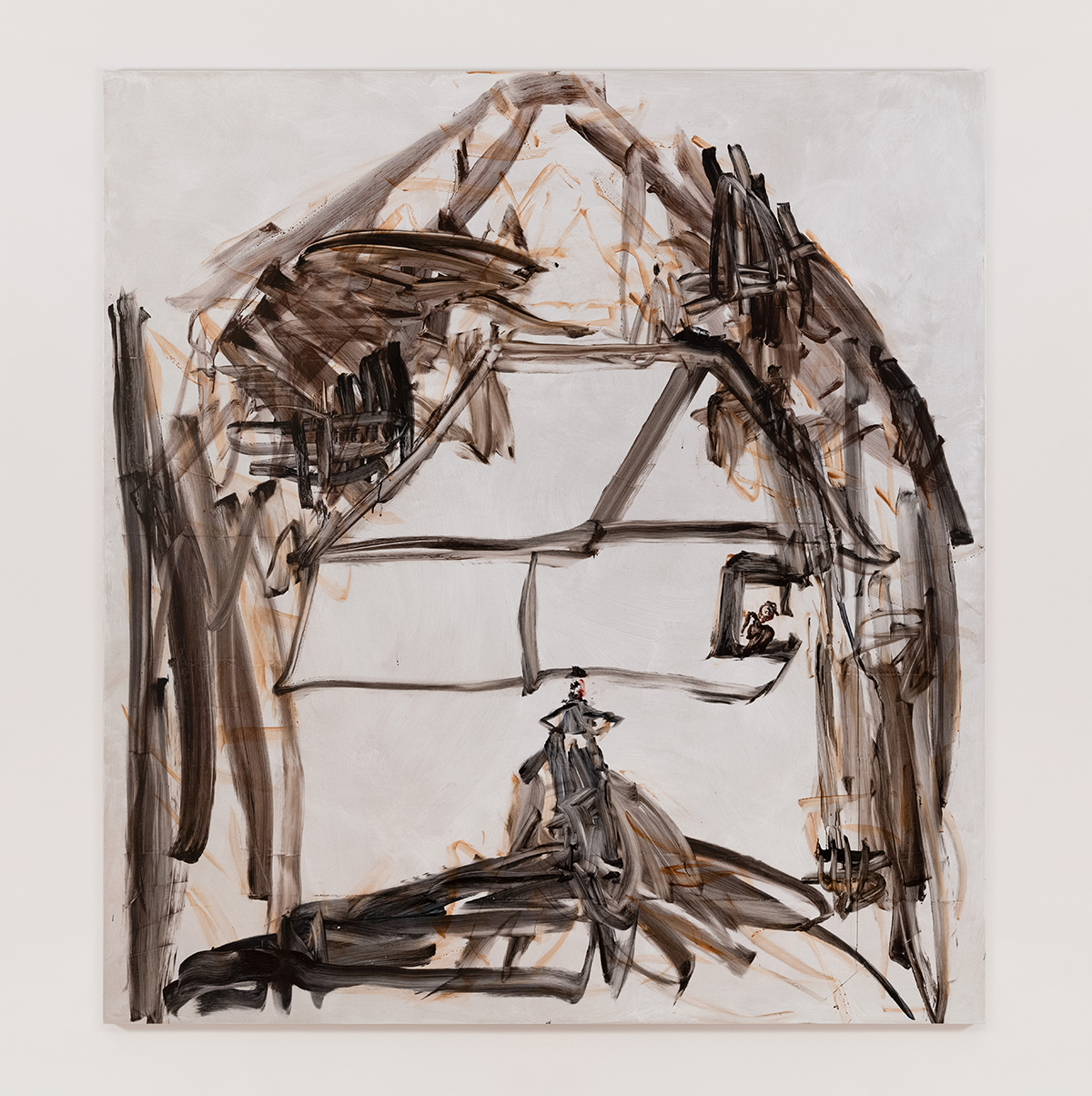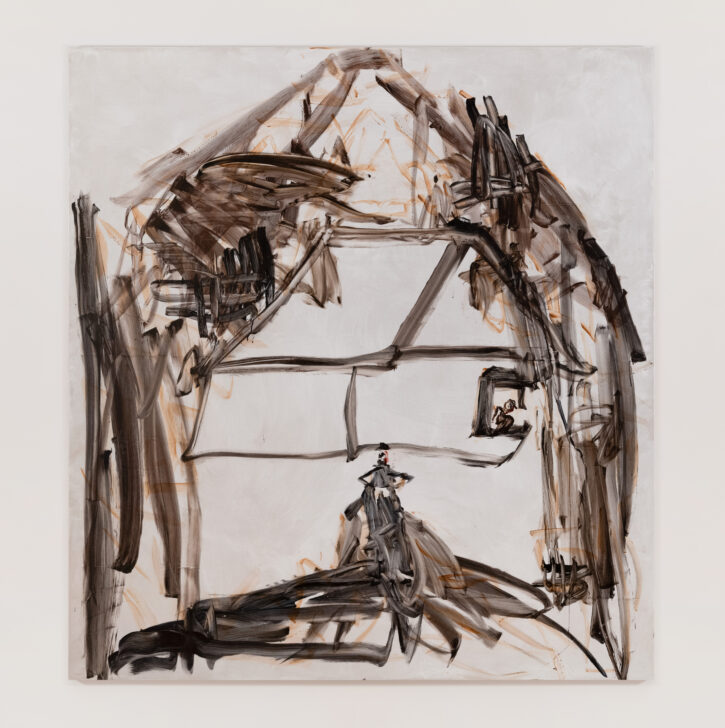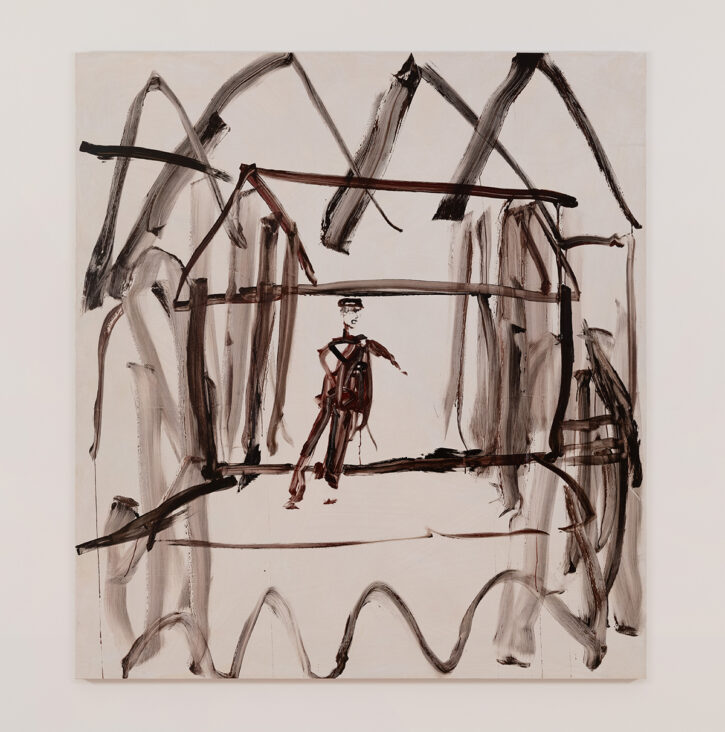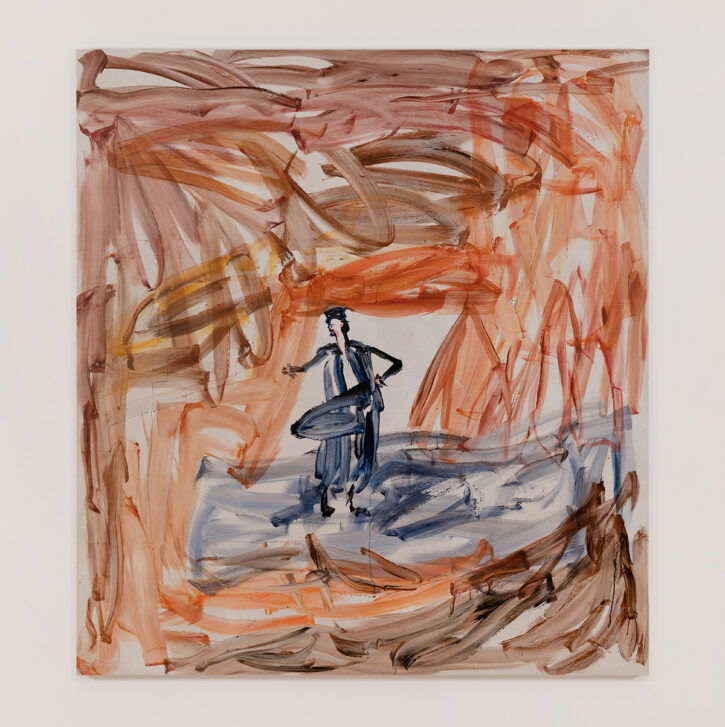Curated by_2024 "Untold Narratives"
About the exhibition
Ugo Rondinone on David Deutsch
A PALACE WITH NO ROOF
The main forces of David Deutsch paintings are constraint, solitude, and disintegration. Themes which echo the existentialism in the work of Samuel Beckett, Alberto Giacometti, and Francis Bacon. All four artists are engaged in defining the borders between a theatrical performance of a play, of a sculpture or of a painting and a purely visual representation.
These themes constitute the affinities between the four artists who crafted works in drastically different ways yet shared strikingly similar concerns about the limits of representation and art’s inherent failure to create transcendent meaning.They also embodyaesthetic and theoretical affinities that all four artist share: the fragility of human existence. Bodies are no longer a guarantee of a certain consistency of subjective experience; they are instead just as unstable as consciousness itself.
Deutsch, like Beckett, Giacometti and Bacon, draws attention to the repeated use of cages, to rethink the status of bodies in space. Deutsch is preoccupied with these questions, and the use of cages in his paintings, in form of a web of grids, a house, a car or as in his latest paintings for the exhibition at Krobath Gallery in form of an opera stage. These cages are framing the stage – a frame that doesn’t disappear in the representation but rather stands out from it, drawing attention to the limits of that representation.
This point is particularly interesting because for Beckett, Giacometti, Bacon and for David Deutsch, the possibility of existential freedom, or a subject who freely chooses to make meaning in a meaningless world, is gone. Faced with this impossibility of making meaning, a viable alternative is play—the staging of meaning that uses materiality itself to draw attention to its own performance. The stage for David Deutsch is the field of a canvas; it is the ground and its own limit for his performative paintings, which feeds on repetition and speed. The omnipresent frame or cage where one or two or even three figures arepositioned, could be perceived as symbol of social repression and the impossibilities to communicate and make sense of our lives. This form leads Deutsch to consider with ever greater attentiveness the sensations of a painting, its fast rhythm of brushstrokes, the excessive use of the color brown and the idea that a painting might mediate our darkest, most uninhibited urges.
Perhaps the most famous artwork we can relate to David Deutsch’s preoccupation is Giacometti’s sculpture “the place at 4am’, owned by the Museum of Modern Art in New York. Giacometti worked on it during the summer of 1932. Each night he built a palace from pieces of wood the size of thin chopsticks and by the end of the night he let it collapse to then rebuild it in the following night. By Autumn, he knew the form this palace should take, and proceeded to execute the final version of it, all in a single night. The ‘palace’ he ended up with had no roof and no walls. Like the dream of transparency pursued by modernist architects, one can see almost the entire career of Francis Baconcoming out of this image.
The connection made between Giacometti’s sculptures and Deutsch’s paintings will allow us to tackle the major themes that bring them together: the importance of the creative process experienced between repetition and disappointment, their mutual interest in a body that is both a medium and a constrain, the importance of scenography, the dislocation of body and speech, solitude, and a sense of the absurd. Giacometti and Deutsch, like Bacon and Beckett, are articulating psychological aspects of both human condition and states of mind. Their figures, in the case of David Deutsch on the verge of abstraction, are representations or rather expressions of uncompromising interest in melancholy, sexuality, excess and the relevance of painting today.
Ugo Rondinone
Further informations:
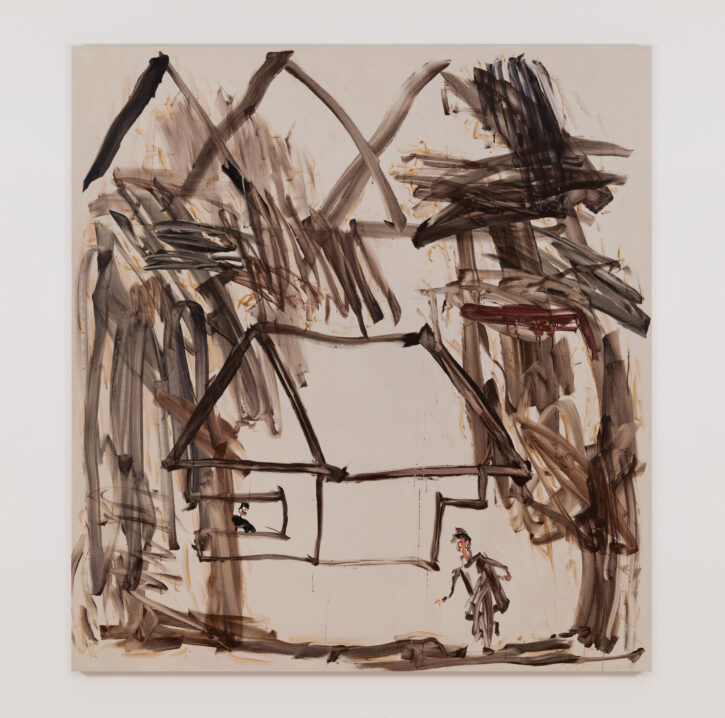
David Deutsch, Untitled, 2024. Acryl auf Leinwand / Acrylic on linen, 201 x 168,6 cm. Unikat / Unique.
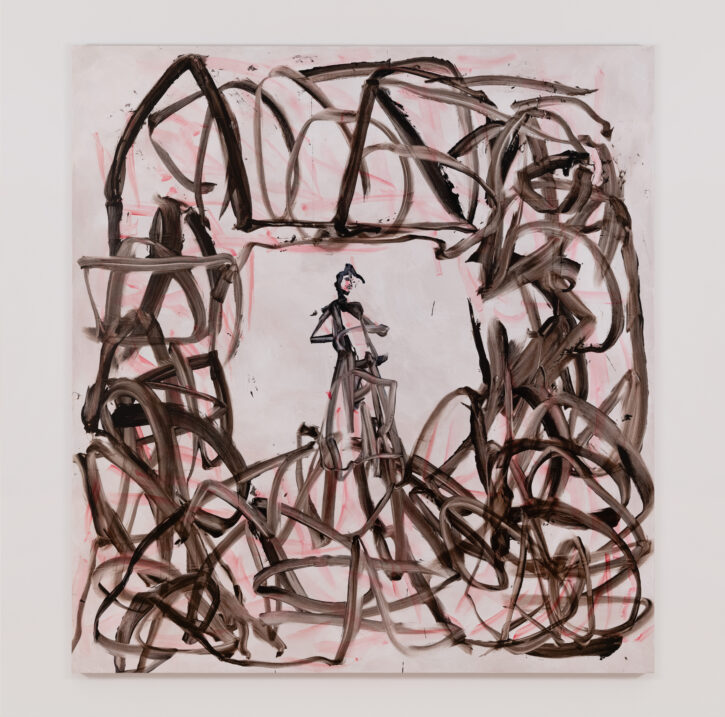
David Deutsch, Untitled, 2024. Acryl auf Leinwand / Acrylic on linen, 201 x 168,6 cm. Unikat / Unique.
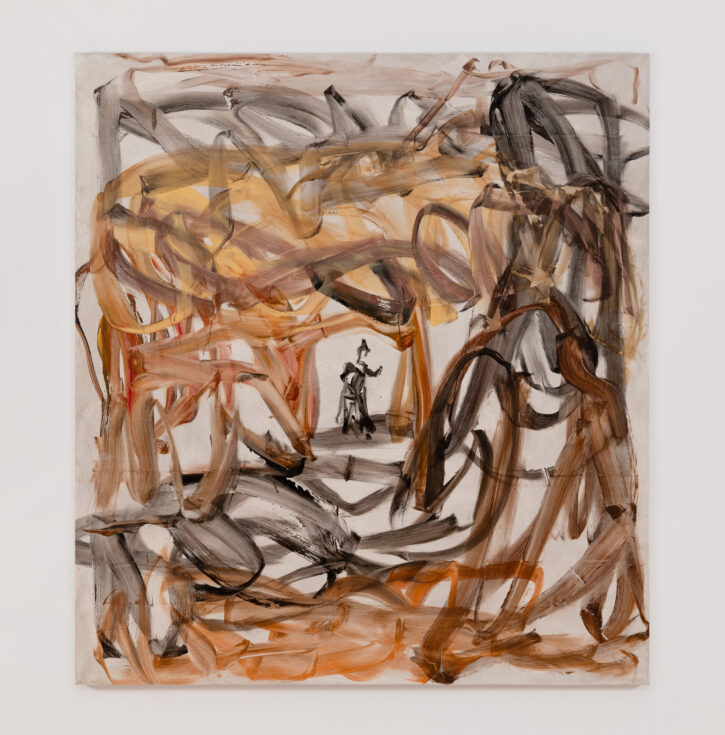
David Deutsch, Untitled, 2024. Acryl auf Leinwand / Acrylic on linen, 172,72 x 157,48 cm. Unikat / Unique.
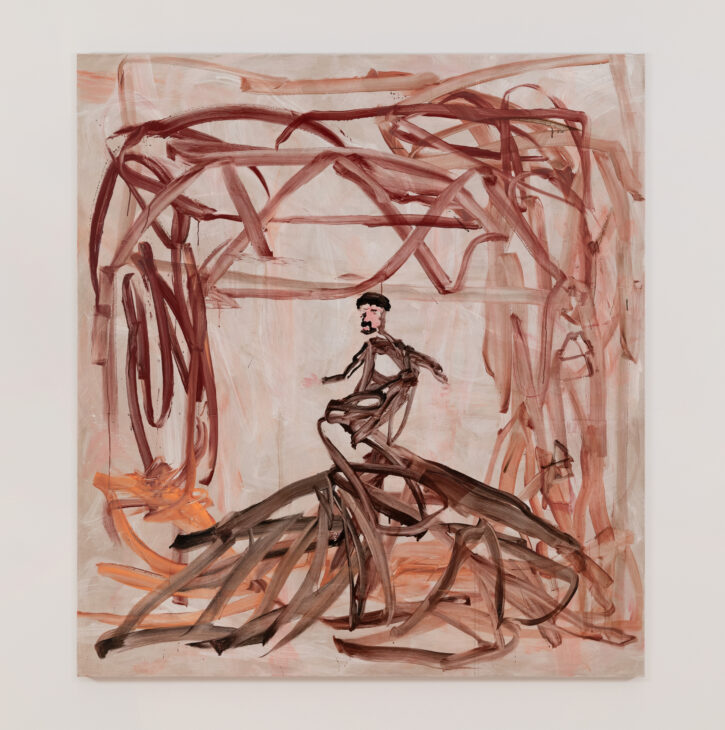
David Deutsch, Untitled, 2024. Acryl auf Leinwand / Acrylic on linen, 172,72 x 157,48 cm. Unikat / Unique.
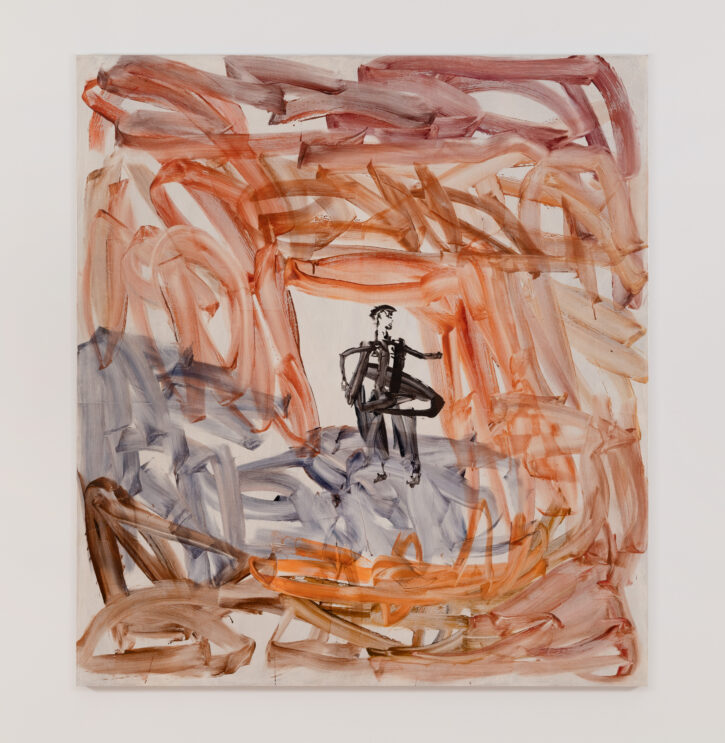
David Deutsch, Untitled, 2024. Acryl auf Leinwand / Acrylic on linen, 172,72 x 157,48 cm. Unikat / Unique.
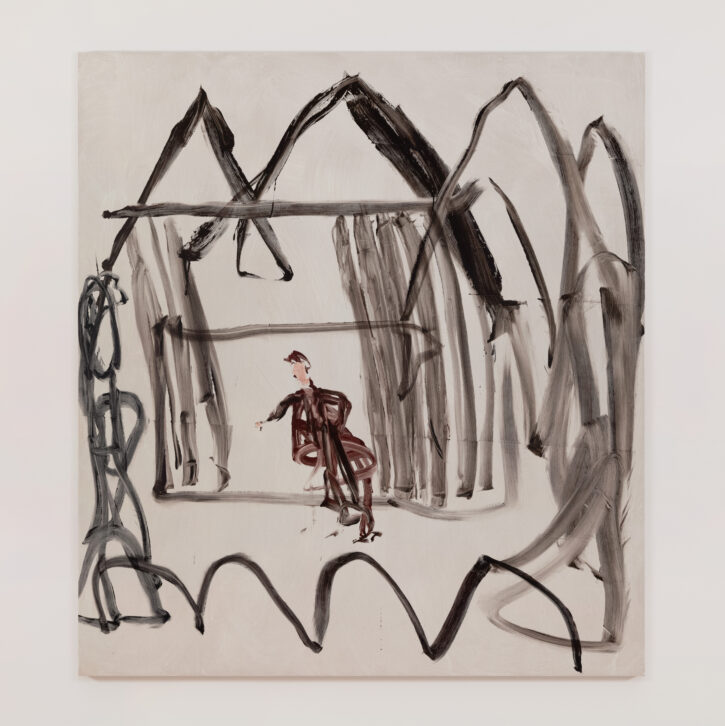
David Deutsch, Untitled, 2024. Acryl auf Leinwand / Acrylic on linen, 172,72 x 157,48 cm. Unikat / Unique.
